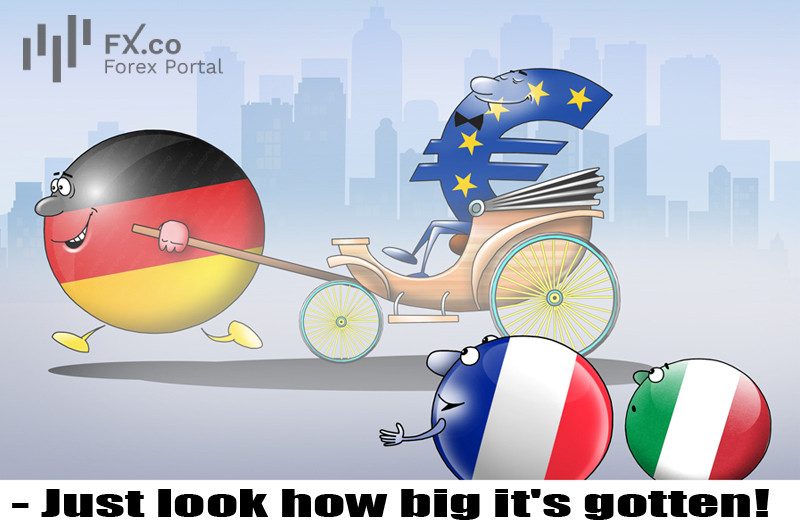
At last, there is good news for the German economy! It is gathering momentum. The key now is not to lose ground. "Germany’s plan has the potential to significantly stimulate activity across Europe in the next two years. But the extent of the impact will depend on supply constraints and how policymakers in other countries respond," analysts at Deutsche Bank noted.
Currently, Berlin has committed to new borrowing totaling 800 billion euros for defense and infrastructure by the end of the decade. According to analysts, the value of this package is almost 20% of Germany’s GDP. Against this backdrop, many economists have raised their forecasts for German growth in 2025–27 by nearly 2 percentage points.
At present, Germany accounts for 27% of the euro area economy. With these commitments, Germany could help boost eurozone GDP growth by 0.5 percentage points over the reporting period. Deutsche Bank analysts indicated that secondary effects through trade and increased confidence in the chosen strategy could contribute an additional 0.2 points to growth, potentially bringing the total increase to 0.75 points.
"Other eurozone members may lack Germany’s fiscal space, but they can still benefit from the side effects of its fiscal expansion," Deutsche Bank highlights.
Neighboring countries that are tied to Germany’s manufacturing supply chain, such as Austria, Slovakia, and Slovenia, stand to benefit the most. At the same time, France and Italy will also gain from an increase in German imports of machinery and equipment, experts believe.
Deutsche Bank noted that confidence effects might further strengthen growth throughout the euro area, since business sentiment in the eurozone has historically tended to follow that of Germany. However, the scale of the stimulus may pose challenges for the European Central Bank’s current monetary policy. Deutsche Bank’s currency strategists suggest that in 2026, the regulator may forgo further easing in favor of tighter policy.
 English
English 
 Русский
Русский Bahasa Indonesia
Bahasa Indonesia Bahasa Malay
Bahasa Malay ไทย
ไทย Español
Español Deutsch
Deutsch Български
Български Français
Français Tiếng Việt
Tiếng Việt 中文
中文 বাংলা
বাংলা हिन्दी
हिन्दी Čeština
Čeština Українська
Українська Română
Română

Comments: